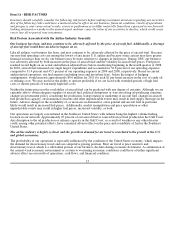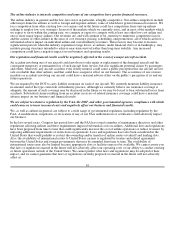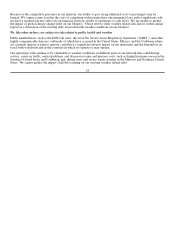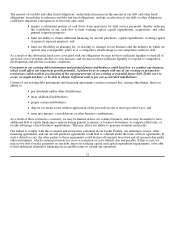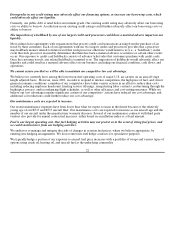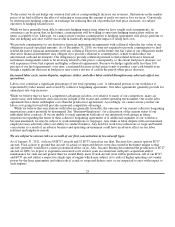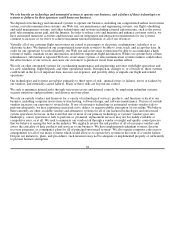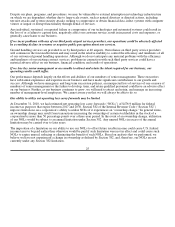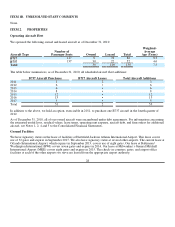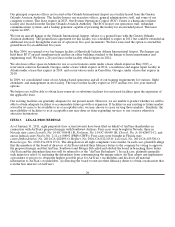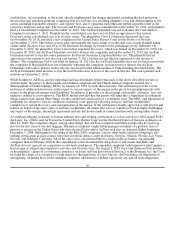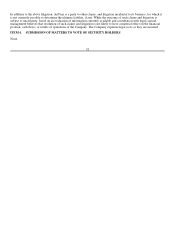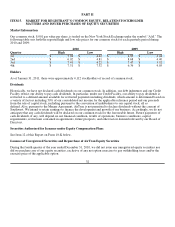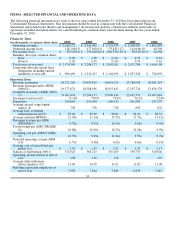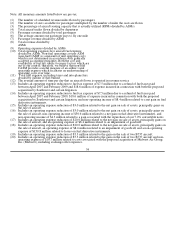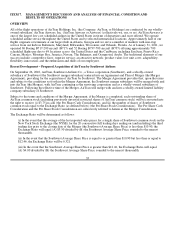Airtran 2010 Annual Report Download - page 33
Download and view the complete annual report
Please find page 33 of the 2010 Airtran annual report below. You can navigate through the pages in the report by either clicking on the pages listed below, or by using the keyword search tool below to find specific information within the annual report.
Despite our plans, programs, and procedures, we may be vulnerable to external interruption in technology infrastructure
on which we are dependent, whether due to large-scale events, such as natural disasters or directed actions, including
terrorist attacks and system security attacks seeking to compromise or obtain financial data, infect systems with computer
viruses or impair or disrupt functionality through denial of services.
Any individual, sustained, or repeated failure or compromise of our technologies and automated systems could result in
the loss of or a failure to capture data, negatively affect our customer service, result in increased costs and expenses, or
generally cause harm to our business.
If we incur problems with any of our third party airport services providers, our operations could be adversely affected
by a resulting decline in revenue or negative public perception about our services.
Ground handling services are provided to us by third parties at 40 airports. Our reliance on third party service providers
will continue in the foreseeable future and may result in the relative inability to control the efficiency and timeliness of all
of our outsourced ground handling operations. Although we do not anticipate any material problems with the efficiency
and timeliness of our existing contract services, problems in connection with such third party services could have a
material adverse effect on our business, financial condition, and results of operations.
If we lose key senior management or are unable to attract and retain the talent required for our business, our
operating results could suffer.
Our performance depends largely on the efforts and abilities of our members of senior management. These executives
have substantial experience and expertise in our business and have made significant contributions to our growth and
success. Although we have emergency and long term succession policies, an unexpected loss of services of one or more of
members of senior management or the failure to develop, train, and retain qualified personnel could have an adverse effect
on our business. Further, as our business continues to grow, we will need to attract and retain, and manage an increasing
number of management-level employees. We cannot assure you that we will always be able to do so.
Our ability to utilize net operating loss carry-forwards may be limited.
At December 31, 2010, we had estimated net operating loss carry-forwards (“NOLs”) of $476.9 million for federal
income tax purposes that expire between 2017 and 2030. Section 382 of the Internal Revenue Code (“Section 382”)
imposes limitations on a corporation’s ability to utilize NOLs if it experiences an “ownership change.” In general terms,
an ownership change may result from transactions increasing the ownership of certain stockholders in the stock of a
corporation by more than 50 percentage points over a three-year period. In the event of an ownership change, utilization
of our NOLs would be subject to an annual limitation under Section 382. Any unused NOLs in excess of the annual
limitation may be carried over to later years.
The imposition of a limitation on our ability to use our NOLs to offset future taxable income could cause U.S. federal
income taxes to be paid earlier than otherwise would be paid if such limitation were not in effect and could cause such
NOLs to expire unused, reducing or eliminating the benefit of such NOLs. Based on analysis that we performed, we
believe we have not experienced a change in ownership as defined by Section 382, and, therefore, our NOLs are not
currently under any Section 382 limitation.
25


